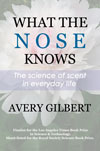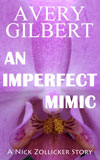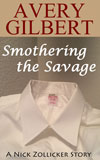
For my part in the recent Mystery of Musk competition I sniffed ten perfumes fresh and at drydown, on both blotter and skin—a rather sustained bout of evaluation that left me thinking about the psychology of sensory judgment. Afterwards, I happened across an new study by Swiss psychologist Géraldine Coppin and her colleagues that speaks to the topic. It’s an olfactory twist on a common experience: after struggling to choose between similar items—neckties, music albums, scenic travel routes—we come to believe that we did, after all, make the correct choice.
But did we really? Or did we adjust our impressions after the fact, in order to justify our choice? A ton of experimental evidence suggests that after choosing between two similar items, a person will later rate the chosen one more positively than before, and the rejected item as less desirable. Psychologists dub this “choice-induced preference modulation”. It’s an echo of the Heisenberg uncertainty principle: the very act of selecting changes the evaluation.
Psychologists like to explain this phenomenon using Leon Festinger’s theory of cognitive dissonance. The idea is that we get a mental headache of sorts after choosing Mary Kate, because we are aware that Ashley also has many positive traits while Mary Kate has some negative ones. It is hard to reconcile this knowledge with the belief we made the correct choice. To resolve the metaphysical headache, we adjust our view of Ashley downward by stressing her negatives and lowering her positives; we also enhance the favorable features of Mary Kate and dial down her negative attributes.
(Festinger’s much-studied theory had a soft spot at its core: how do we know that any two beliefs are cognitively dissonant? For many years, the joke in psychology departments was “ask Leon”; hardly a solid basis for a theory of mind.)
There remains a open empirical question: how does the post-choice adjustment in perception come about? Is it a deliberate, conscious process (as cognitive-dissonance fans believe), or do we change our evaluations implicitly and unconsciously? There’s a lot of evidence for the latter, which brings us to Coppin’s study.
Working with a couple of researchers from the Swiss fragrance house Firmenich, her team assembled a dozen relatively unfamiliar smells of moderate intensity and pleasantness, e.g., fig flower, tutti-frutti, vetyver and yogurt. Volunteers were asked to rate the smells for intensity and pleasantness. Next, they were given pairs of odors and asked to choose the one they preferred. In some cases the choice was hard: the two odors were closely matched based on the volunteer’s pleasantness ratings. Other times the choice was easy: the odors were ones rated as very dissimilar.
Ten minutes after selecting the preferred odors, the volunteer smelled all dozen odors again, along with six new ones, and rated them again for intensity and pleasantness. He was also asked whether he had smelled the odor previously and, if so, whether it was one he had chosen or rejected.
Among odors presented as similarly-pleasant, hard-to-choose pairs, the chosen odors were later rated more pleasant, and the rejected odors less pleasant, compared to the initial evaluation. This confirms for the sense of smell that the act of choosing modulates subsequent perceptual judgments. This happened whether or not the volunteer remembered choosing. This implies that preference modulation for scents can occur without conscious awareness.
When it comes to smell, it looks like we can safely disregard Festinger’s cognitive dissonance theory. It also looks like we can stick another pin in our patented FirstNerve Marcel Proust voodoo doll: here’s another way in which odor memory—more precisely, memory for odor judgments—is modified by experience, and not preserved forever in amber as the Proust Boosters would have it.
Coppin’s results have some impact on the psychology of fragrance choice. The perceptual ambiguity of tough-to-choose sniff sessions are automatically modulated once we make a selection, and our new judgments come to support the choice we made. Think of it as the clarifying effect of olfactory decision making. It also may be the mechanism behind another familiar experience: the fact that a newly purchased fragrance “grows on you.”




4 comments:
Very interesting post indeed. My mind is swirling with thoughts related to my own preferences and changes in preference over time.
For example, in the study you mention, what if the time between the initial selection, and smelling the odors again, was one day or one week. What other factors might play into olfactory perception, and how quickly?
Also, the question of willing oneself to consciously evaluate a smell differently pops into mind. I have ended up in love with perfumes that I initially hated. Is that a chemical change in my physiology or simply a decision - conscious or otherwise - to change my own perception?
Does that, then, become a new benchmark for evaluation until the next change occurs?
Just mentally rambling - thanks for the brain tweak on this lazy Sunday.
Josephine:
Worthwhile ramblings. I like your image of benchmarks being constantly recalibrated. An oxymoron, perhaps, but it captures the phenomenon.
I wonder about coming to love a scent you initially hated. Can't be choice-induced preference modulation, since you wouldn't have chosen it in the first place. It's more a quantum expansion of the acceptable range. Most people don't like coffee, cocktail olives, and the like right away. Acquired tastes and all that.
Does it work in reverse too? Think about the rabid antismokers.
I followed the link & maybe the full paper hasn't been published yet - at least I couldn't find it.
I always want to know, how large was the efffect? How much was the difference after one had been chosen? How much did the differences vary from one subject to the next?
Fantastic post!
Post a Comment